Among all the fandom surrounding cricketers for their exploits on the field, there remain a few untold stories of personal struggles that captivate, thrill and inspire lives every now and then. Masters of the willow are, after all, of flesh and blood and therefore, not beyond the realm of pathological infirmities. It requires tremendous amounts of dedication, determination and spirit to fall, rise, dust up and run again. For where there’s a will, there’s bound to be a way.Here, we have a look at 10 inspirational cricketers who suffered from grueling illnesses throughout their playing careers, yet never lost the keenness to represent their country at the highest echelon of the sport.
#10 Michael Atherton (Ankylosing Spondylitis)
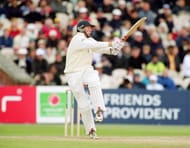
To dwell on medical battles and fitness struggles would mean dwelling upon the crippling disease that affected Russian Chess Champion Vladamir Kramnik as badly as rock guitarist Mick Mars and former England cricket captain Michael Atherton. Ankylosing spondylitis (AS) is a mildly unknown disease among general practitioners in spite of the fact that its prevalence among athletes is moderately alarming.
AS is known in medical parlance as an autoimmune disease, which suggests that in this disease, the immune system of the body attacks its own cells. AS generally affects the spine and the muscles of the back, whereby the sufferer complains of a painful back, and is unable to stretch and adjust the muscles of the back.
Atherton was diagnosed with the disease in his 20s. The hereditary condition that had ended Atherton’s father Alan’s football career continued to haunt him throughout his career and persuaded him to get hydrocortisone injections every now and then into his sacroiliac joint. He, however, preferred to remain private about the matter, fearing the disease might affect popular opinion on his national captaincy.
The gritty batsman managed to carve out a decently successful and reasonably long international career in the face of all oddities. Limited drives, restricted movements of muscles and unrelenting pain could not dampen the spirits of a champion who fought on and emerged as an inspirational hero for the 70,000 Britons who are annually diagnosed with AS.
#9 Mansoor Ali Khan Pataudi (Loss of One Eye)
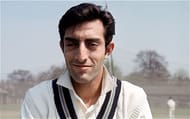
The first unorthodox captain of an independent Indian side who infused aggression and fearlessness into his teammates and changed the face of cricket in India almost single-handedly was forced to play for the major fraction of his career with one functional eye after the other was damaged in a car accident months before he was declared as the Indian captain.
Later on, in his autobiography, he wrote: “I learnt that I had lost the lens of the eye, it having dissolved through injury, and that there was also a coat across the iris. The pupil of the eye had been stitched up, leaving me practically without vision. The eye was also out of alignment, and a further operation to bring it into line was not possible at that time.”
The then youngest captain of India at 21 years of age, Pataudi went on to lead his team in 40 of his 46 career matches, winning nine of them. Six hundreds, including a double ton in Delhi, and 16 half-centuries bear testimony to the kind of grit and efficiency the man mastered so early on in his career.
Such was his perseverance that he came to terms with all the illusive optical images produced as a consequence of his damaged right eye and continued at the highest level of cricket without any complaints for quite a long time.
#8 Brian Lara (Hepatitis B)
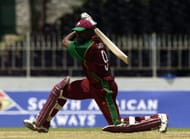
One of the best left-handed batsmen in the 1990s, former West Indies skipper Brian Lara took the world by storm with his delightful approach of measured aggression. Arguably, the finest middle-order batsman produced by the Caribbean nations post their golden age, Lara was the epitome of talent blended with diligence.
The conscientious batsman was diagnosed with Hepatitis B during the Champions Trophy in Colombo in September 2002. He had been rushed to the hospital after scoring a century in a pool game where medical practitioners confirmed the disease. He was, therefore, dropped from the team and the West Indies Cricket Board refused to issue a detailed statement on Lara’s condition citing privacy reasons.
Although Hepatitis B, a blood-related disease, is considered more treacherous than even AIDS by some, it is, fortunately, curable unlike the latter. The question, thus, wasn’t whether Lara would return, but rather if he would be able to reclaim his previous form when he returned.
As it turned out, the southpaw went on to score 400 not out in Tests two years later – a record that stands even today. Geniuses like Brian Charles Lara have an indomitable spirit.
#7 BS Chandrasekhar (Polio)
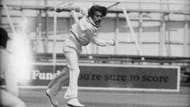
Born on May 17, 1975, Bhagwat Chandrasekhar found his right arm withered and emaciated after a life-threatening bout of poliomyelitis at the age of three. Impossible is an empty word in sports, and when Chandrasekhar turned his deformity into an asset, it was time for cricket to revel in the glory of championing the impossibilities.
The thinness of his arm accounted for that extra bit of flexibility allowing him to infuse further incisiveness into his looping top-spins. Maturity and complete understanding of his physical potentials developed him into a lethal match-winner for India who could send down spinning leg-breaks at almost medium pace.
Staggering as his career statistics are, Chandrasekhar scalped 98 wickets in 14 Test wins at an average of 19.27, including 8 five-fors and two 10-wicket hauls. The fact that even the spinner himself could not predict the trajectory of the ball once it left his hand added to his enigma and propelled him during his victorious spells overseas.
#6 Michael Clarke (Decimated Intervertebral Disc)
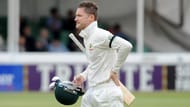
Celebrated Australian skipper Michael Clarke has had to live throughout his adult life with back problems after he was diagnosed with decimated intervertebral discs soon after he stepped into manhood. That, however, hardly deterred Clarke who has emerged as a stylish stroke-maker and a reliable middle-order batsman for Australia in the last few years.
The discs are present in between the vertebrae of the spinal cord and are made up of pliable material that has a cushioning effect and acts as a shock-absorber. While bulging discs owing to severe exercises and excessive stretching of muscles may be common in people, Clarke’s problem lies in a graver plane since he suffers from nerve compression too often, that leads to pain and numbness in the back and hamstrings.
Restricted flexibility, nonetheless, has no effect on the swashbuckling cricketer who continues to be keen on diving on the field and playing expansive copy-book drives, silently soaking up the physical agony bit-by-bit. Mental toughness assumes an entirely different meaning when it comes to define Clarke and his ever-lasting struggles.
It may not be too irrelevant to mention here that Clarke had been diagnosed in 2005 of mild low-grade skin cancer on his face due to heavy exposure to the sun. An altered lifestyle that included wearing protection under his ODI jersey and using a hat all the time assisted him in his recovery.
#5 Ryan Harris (Flotaing Bone)
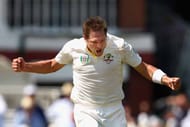
What Ryan Harris did in the final innings of the last Ashes Test earlier this year defied human abilities and medical logic. He huffed and puffed, winced at every stride and looked like breaking down, yet continued to run in and bowl, in what seemed like an endless spell. The consequences were sweeter than imaginable – 4/32 in 24.3 overs that included 15 maidens.
The Australian had a floating bone problem caused by previous injuries that had left him with little cartilage in his right knee. His knee would swell up after every day’s play and his doctor would nag him to get a surgery done. Going for the removal of bone fragments in his knee, however, meant Harris would’ve to miss the last two Ashes Tests against England.
Eager to play in all the five scheduled matches, the speedster postponed his surgery. He bore with the pain throughout the entire series and ended up with a whopping tally of 22 wickets. His heroics earned Australia a series victory in the third Test itself.
But Harris wasn’t right. His knees were crying in agony, his hips were flexing poorly. You could get the feeling that he needed to be with his doctor, his physiotherapist, his surgeon then. Instead, he kept on running, wincing and limping all the way, throwing down dot balls and picking up wickets.
#4 Wasim Akram (Diabetes)

Dynamic Pakistani swing bowler Wasim Akram had been forced by his father to consult a doctor when he began displaying diabetic symptoms including considerable weight loss, thirst and fatigue. The consultation resulted in him being diagnosed with type 1 diabetes mellitus, a condition where the body fails to produce enough insulin.
The fact that this happened at the age of 31 when Akram was at his peak, devastated him initially before he pledged to conquer the disease and carry on with his playing career. His resolve won him another 250 wickets before he hung up his boots and was honoured with a place in the Hall of Fame in September 2009.
Craig McMillan, the Kiwi all-rounder, suffered similar woes after he was diagnosed with diabetes at the age of 15. He would perennially run low on blood glucose and would have to pop a jellybean or two into his mouth in the midst of a match. While this visibly affected his fitness, it could do nothing to his illustrious career that spanned 11 long years and earned him the crown of the then fastest century by a New Zealander (from 67 balls) against Australia at 31.
#3 Shoaib Akhtar (Hyperextended Elbow)
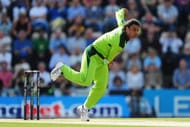
Critics always had sour grapes while talking about Pakistani pacer Shoaib Akhtar’s bowling action. Strangely, none seemed too convinced about his anatomical anomaly being what it was. While debates regarding whether his ‘defect’ provided him with an unfair advantage over his contemporaries continued to don the headlines, hardly any soul took notice of the way Shoaib’s body was breaking into pieces with every delivery bowled.
Considered a medical sensation, Akhtar’s anomaly lay in that his elbow could hyperextend (bend the ‘wrong way’) up to 40 degrees in contrast to a maximal value of 20 degrees for a normal human being. This was the case in all this joints. No wonder, therefore, that his career was plagued with injuries and he would require injections to remove fluids from his joints.
Further, Akhtar was found to have flat feet – a condition that prevented him from walking straight even when he was just a 5-year-old. The controversial bowler, however, braced all the odds and egged himself on until he was running in national colours and sending down deliveries at 100mph.
#2 Martin Guptill (Two Toes)

New Zealand opener Martin Guptill had had his fair share of troubles in his childhood. So much so that he could have lost his life in an incident that ultimately went on to give him a nickname. As Guptill reflects on the incident, he admits experiencing the worst pain in his life.
At a tender age of 14, the Kiwi batsman was involved in a crown forklift truck accident that resulted in surgical amputation of the three smaller toes of his left foot. Since then, he calls himself ‘Two Toes’ in a reminder of the accident that nearly cost him his life.
According to father Peter, Guptill became more determined after that.
"When he realized he could walk and do everything again he got right back into it, even harder than before. I think he realized in a flash everything could be lost so he's making the most if it," the senior Guptill said.
The determination and perseverance was evident when he smashed his way to an unbeaten 189 in the second ODI against England in June 2013, guiding his team to an 86-run victory in the series decider en route to the highest ODI score by a New Zealander.
#1 Yuvraj Singh (Cancer)
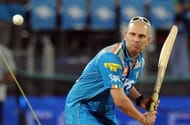
Months after images of India all-rounder Yuvraj Singh going down on his knees and letting out a gladiatorial roar after scoring the winning runs against Australia in the 2011 World Cup hit the headlines, national newspapers and prominent media houses were shocked to learn that the 2011 World Cup Player of the Tournament was down with cancer.
Although the doctors had assured him of cure, the initial impact had stumped the southpaw from Punjab. As he later recounted in his autobiography: “That day I cried like a baby. When no one could see me or hear me. Not because I feared what cancer would do but because I didn't want the disease. I wanted my life to be normal, which it could no longer be.”
After undergoing a grueling chemotherapy programme in the USA, Yuvraj returned to international cricket after several months and staged a heroic comeback against New Zealand in a T20 match in 2012. He remained in the playing eleven for about a year before running out of favour with the selectors owing to poor form.
Follow IPL Auction 2025 Live Updates, News & Biddings at Sportskeeda. Get the fastest updates on Mega-Auction and cricket news